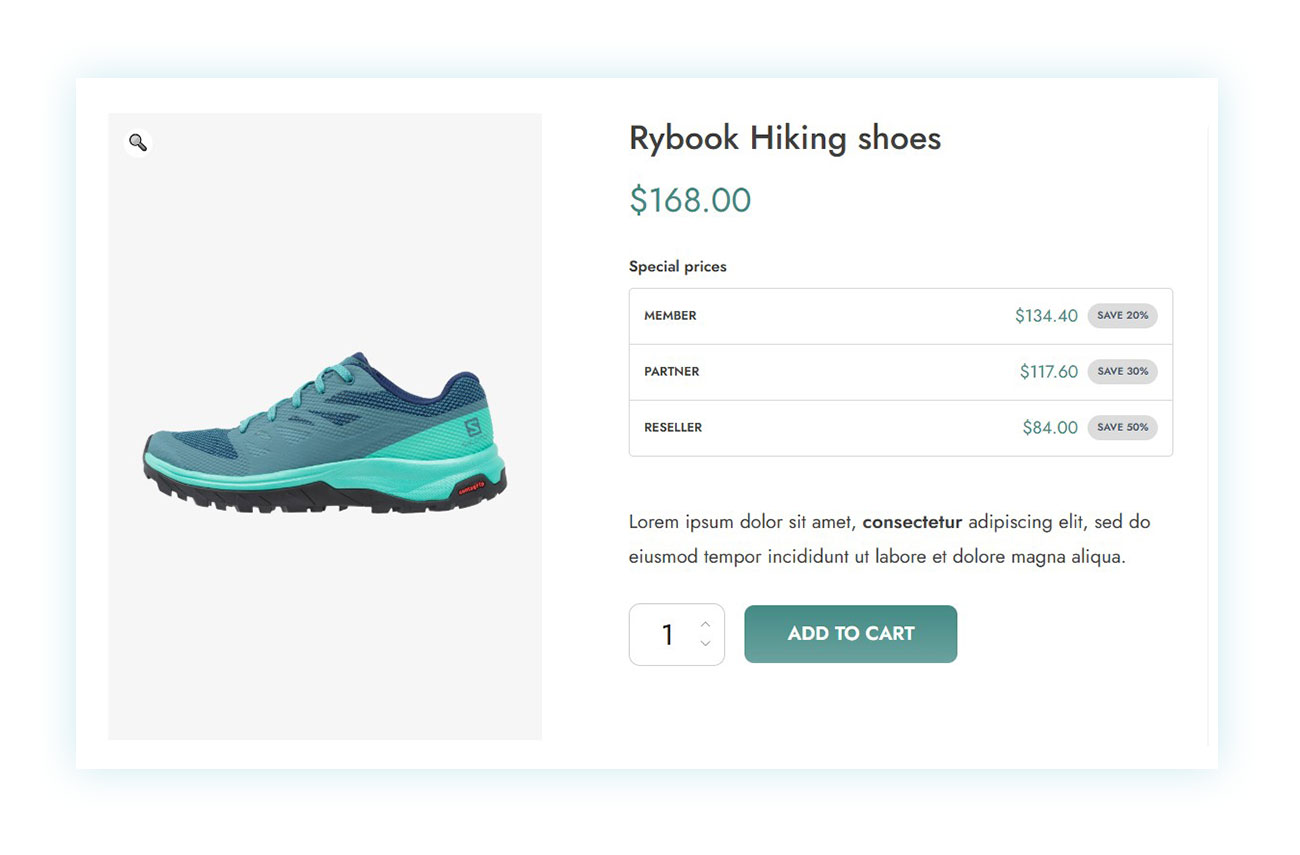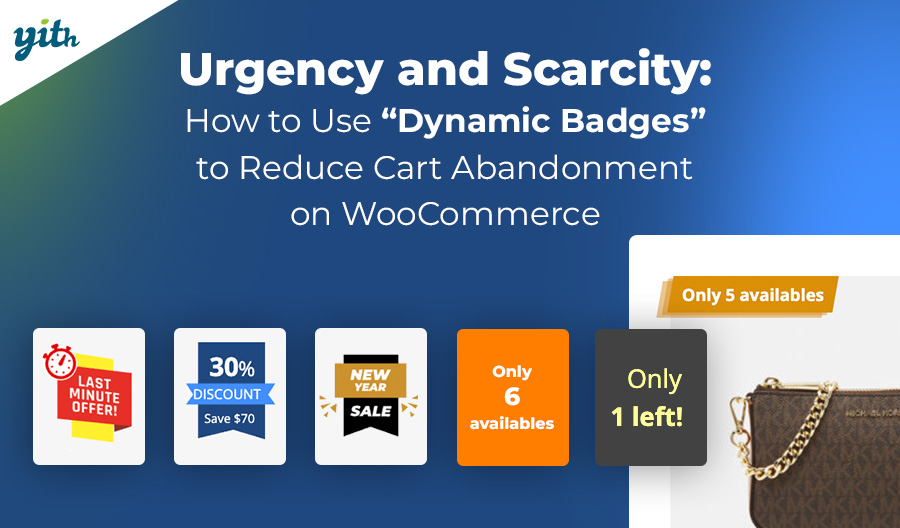It may seem obvious, but it’s not. Having a pricing strategy is critical to the success of your WooCommerce store. However, setting the right price for your products is not simple; it requires careful consideration that goes beyond basic maths. Relying too heavily on discounts can reduce your profit margins, even if sales increase.
As a result, sales increase, but profits do not.
In this guide, we’ll separate short-term promotions from long-term pricing strategies and evaluate the tools that can help you build a sustainable eCommerce store.
Therefore, we’ll stop talking about how to “discount” and start talking about how to “price” your products to build a profitable business.
Let’s find the most effective WooCommerce pricing strategy for your online store.
Table of contents
- Phase 1: The Foundation. How to Calculate Your Minimum Profitability Price
- Phase 2: Choose Your Strategic Pricing Model
- Phase 3: The Psychology of Pricing (How Customers Perceive Numbers)
- Phase 4: Implementing the Strategy on WooCommerce (The YITH Advantage)
- Conclusion: Price is the most important marketing tool
Phase 1: The Foundation. How to Calculate Your Minimum Profitability Price
As with any pricing strategy, the first step is to gather the right data. When building a pricing strategy, it is essential to have a clear understanding of the associated costs.
To calculate your “Cost-Plus,” consider the following:
- COGS (Cost of Goods Sold) – This includes the direct cost of manufacturing or purchasing the products you sell. If you do not use suppliers, it can be more difficult to calculate. In this case, you need to consider the cost of raw materials and the time spent creating the product.
- Transaction costs – These costs are often overlooked because they are quite low, but they can become significant over time if they are not considered in your pricing strategy. Every sale processed through payment gateways like PayPal or Stripe incurs a fixed fee plus a percentage charge. Some CMS platforms, such as Shopify, may also add extra charges, so make sure you include all additional costs.
- Operating costs – Running a WooCommerce store involves recurring expenses: hosting plan, paid plugins, marketing, salaries, storage, and more. It is therefore crucial to estimate your average monthly and annual expenses, since these will be reflected in the final product price.
- Desired profit margin – Remember to include your target margin. Otherwise, you’ll only break even. Add it to your original price to determine the minimum fixed price you should charge.
Once you’ve calculated this baseline, you’re ready to explore dynamic pricing based models and other strategies for growing your online store profitably.
Phase 2: Choose Your Strategic Pricing Model
There are several ways to set your product price, each with its own advantages and disadvantages. Let’s review them together:
- Competition-Based Model: In saturated markets, your online store will always be influenced by your competitors. Many sellers use a strategy called “price-based selling”, which involves matching or slightly undercutting competitor prices. While this approach is simple, it carries its own risks:
- First, you don’t know whether your competitors have the same costs or profit margin as you. A price that is ideal for your competitors may not be ideal for you.
- Second, it can lead to a price war that is detrimental to both parties and can affect customer trust. It’s not the ideal solution.
- The Cost-Plus Model: This method builds on the minimum fixed price from Phase 1 by adding a percentage to cover additional costs, promotions and unforeseen expenses. While it’s relatively safe because it considers all total cost factors, there’s a risk of sacrificing significant profit margins or setting prices too high which can be counteractive to boost sales.
- The Value-Based Model: This is the most powerful option for a WooCommerce website. Here, pricing reflects the product’s perceived value to specific customers, rather than just its cost. Factors such as brand reputation, product quality, customer satisfaction, user experience (UX), additional services and dedicated support all influence perceived value. You can enhance perceived value with fixed costs through advanced features, service quality, and customer data insights.
Phase 3: The Psychology of Pricing (How Customers Perceive Numbers)
Once you have defined a price range, you can use powerful psychological techniques to influence customer expectations and behavior on your WooCommerce store. Here are some of these techniques:
- Charm Pricing: The classic $9.99 vs. $10.00 trick still works. This tactic plays on the “left-digit bias,” in which customers generally focus on the number farthest to the left of a figure. As a result, they perceive $9 as the cost, not $10. It’s a subtle yet effective way to make a product’s price more appealing without changing its actual value. Moreover, the widespread use of this technique makes full prices seem unusual.
- Price Anchoring: Showcasing a higher “original” or “recommended” price alongside your current offer creates a perception of savings. This technique is widely used, even by Amazon. It increases the perceived value of your product without cutting into your profit margin.
- Decoy Pricing: The “small, medium, large” strategy makes the “large” option seem the most advantageous. This is a widely used technique in specific sectors. A clear example of this can be seen in fast food: McDonald’s offers three variations of the same menu: small, medium, and large. Although these options create the illusion of choice, McDonald’s actually aims to sell mainly Large Menus.How? Set the price of the medium menu close to that of the large menu. Instead of $7, $10, and $13, for example, set the prices at $7, $12, and $13. Customers will think, “I might as well spend an extra dollar and get the larger menu!” Without this pricing strategy, many more customers would choose the small menu. The medium menu is merely a marketing tool and will always be the least popular option.Of course, this system can be used to favor other available options.
- Bundling: In general, creating and selling product bundles is a powerful tool. Bundling multiple products into a single offer increases their perceived value. Whether or not you apply a bulk discount, bundles are seen as a better deal. This strategy helps sell slow-moving inventory, encourage repeat purchases, and improve customer satisfaction. Bundling is also a great way to offer personalized pricing and reward loyal customers.
Phase 4: Implementing the Strategy on WooCommerce (The YITH Advantage)
The theory is fascinating. But how can you apply it to your WooCommerce store when it doesn’t support these features natively? While you can use charm pricing and create product bundles, these options are not optimized.
Although WooCommerce offers a free platform on which to build your eCommerce store, adding advanced features requires specific WooCommerce plugins. We will look at some direct examples below.
Implementing Bundling and Decoy Pricing
As mentioned, WooCommerce allows you to create product bundles, but the feature is basic. To create more advanced packages and take full advantage of this functionality to increase the average order value (AOV) and take full advantage of this functionality, you need to use a plugin such as YITH WooCommerce Product Bundles:

By creating bundles of products that are often purchased together, you can increase the value of shopping carts, sell less successful products by linking them to more popular ones, and naturally and effectively cross-sell and upsell.
Implementing Value-based Pricing by Customer Segment
The price of a product varies depending on the user category. For example, if your business targets both end customers and resellers (encompassing both B2C and B2B), it’s important to display different prices based on the user type.
YITH Role Based Prices allows you to show completely different prices to resellers (a different value segment), as well as to other user categories. You can also hide prices from unregistered users and much more.

Implementing Price Anchoring and Variation
When it comes to pricing, YITH WooCommerce Dynamic Pricing and Discounts is a must-have plugin for your WooCommerce store. This plugin is a powerful tool for managing product prices.
It allows you to adjust prices based on multiple factors, giving you the ability to create a variety of promotional strategies.

Using Badges to Communicate Effectively with Your Customers
Finally, we’ve got a plugin that we recommend to help you manage your prices and communicate with your customers more effectively. It’s called YITH WooCommerce Badge Management. This plugin lets you add icons to product images to make them more appealing to customers:

Many customers look for specific features, which you can showcase. You can also add a badge that immediately shows the product’s offer status.
Remember, no matter how good your pricing, product quality, and promotion are, they’re useless if your customers can’t see them.
Conclusion: Price is the most important marketing tool
Though it may seem counterintuitive, price is more than just a number, it’s a message. It communicates the value of your brand, the trust it inspires, and the image you want to project for your products.
Many online stores focus on lowering prices to compete with others, but this leads to lost margins. Furthermore, continuously lowering prices reduces the perceived value of your products and services.
The right price isn’t the lowest price; it’s the price that reflects your brand, enhances your products, and ensures the sustainability of your business.
It all starts with analyzing your business. You need to understand how to improve your products and determine the optimal price to maximize earnings.
A well-thought-out price is more than just an optimized figure. It’s also a marketing tool and a promise of value. It’s the key to long-term growth.
To manage pricing intelligently, you need the right tools: plugins that can automate, segment, and improve your pricing based on real data and solid strategies.
Start building your pricing strategy today.
Discover the YITH suite of plugins for advanced price management and transform your store from “busy” to “profitable.”



